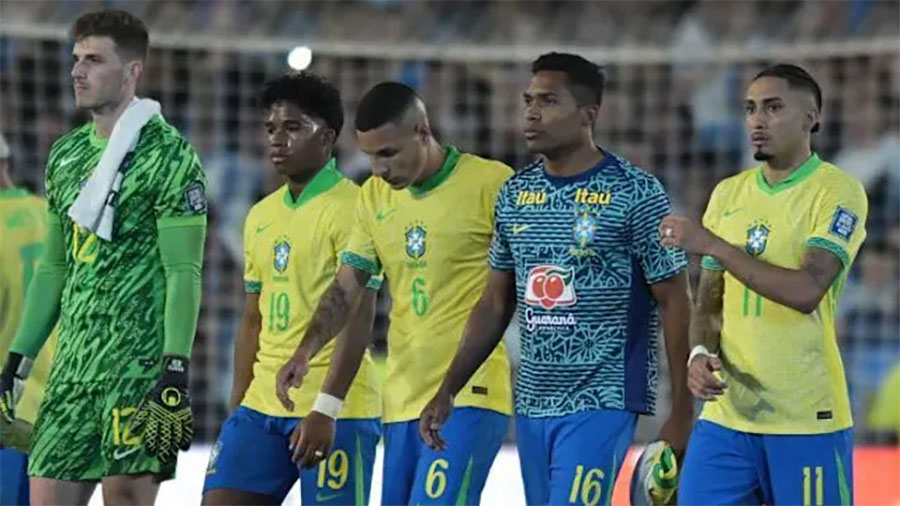
For Brazil, qualification is merely a series of competitive matches to refine a squad capable of winning the tournament. However, with just over a year until kickoff, they appear far from that goal.
It's easy to forget how formidable Brazil were in Qatar 2022. They exited in the quarter-finals on penalties against Croatia, a match where their opponents had just one shot on target, aided by a deflection. That squad was solid, with goalkeeper Alisson rarely tested, and they showed glimpses of brilliance. They had a real shot at winning.
So, how have they declined so drastically? Despite being packed with talent, Brazil now looks disjointed and uninspired. Their humiliating 4-1 defeat to Argentina exposed a midfield that seemed nonexistent, leaving them ineffective in both attack and defense. This wasn't an isolated incident—recent performances have shown a lack of structure, poor ball progression, and midfield vulnerability.
Individual brilliance has occasionally masked these issues—such as Vinicius Jr.'s stoppage-time winner against Colombia—but it's not sustainable. If a talented cast delivers a poor performance, the director must take responsibility.
Brazilian coaching is in crisis, hindered by limited training opportunities and job insecurity in domestic football. Most successful club coaches in Brazil today are foreign, particularly Portuguese and Argentine.
Current coach Dorival Jr., a veteran of Brazilian football, appears overwhelmed on the international stage. His tactical choices against Argentina—playing just two central midfielders—were baffling. His failure to set a clear strategy or maintain composure within the squad makes his position increasingly untenable.
If Brazil opts for a change, they have two likely paths: hiring a foreign coach, such as Portugal's Jorge Jesus, or fast-tracking Filipe Luis, the former Chelsea left-back, who has impressed early in his coaching career with Flamengo.
Regardless of who leads the team, one issue must be addressed—midfield cannot be an afterthought.
Brazil's midfield problems stem from a tactical shift in the 1990s, favoring two defensive midfielders and two attacking midfielders, sacrificing fluidity for rapid wing play. Lucas Paquetá was emerging as the solution until his career stalled due to an off-field scandal, derailing a potential move to Manchester City.
In his absence, Dorival placed his hopes on Neymar's return—an unrealistic expectation given his long injury layoff. Predictably, Neymar suffered muscular issues, and his ability to return to top form remains uncertain. At 33, he could still play a deep-lying playmaker role, but whether he can reclaim his influence is unknown.
Brazilian fans might recall 2002, when Ronaldo defied expectations after injury to lead Brazil to their fifth World Cup title. If Brazil pulls off a similar resurgence in 2026, it would rank among football's greatest comebacks. However, after their latest humiliation, that scenario seems increasingly unlikely.
















